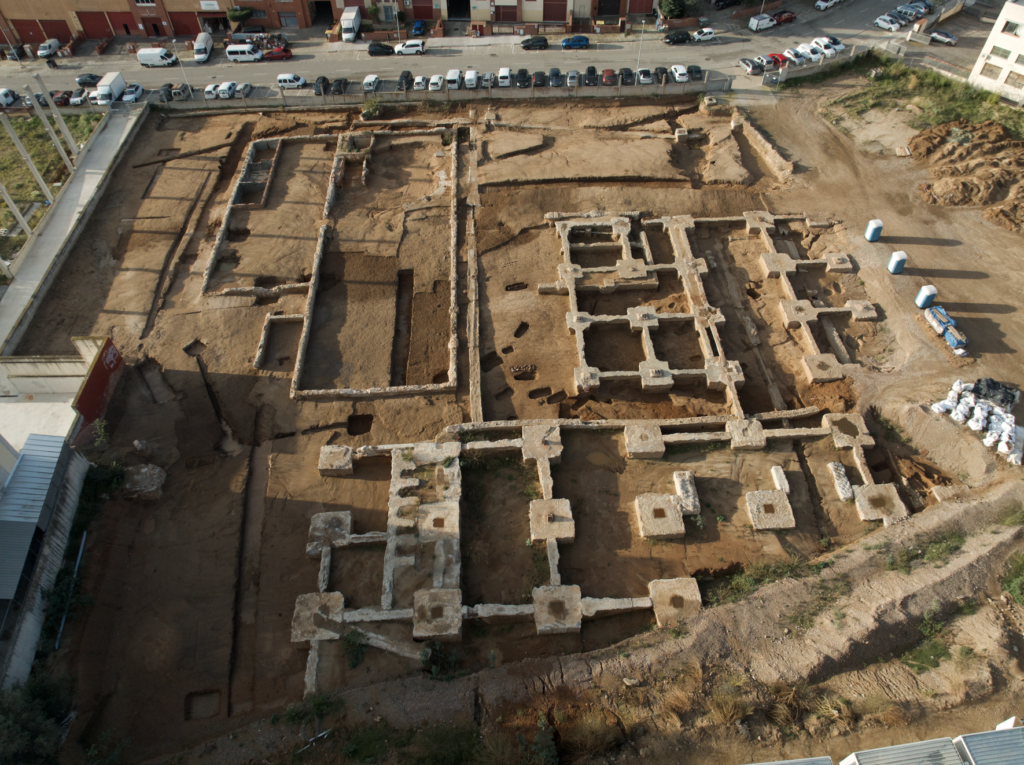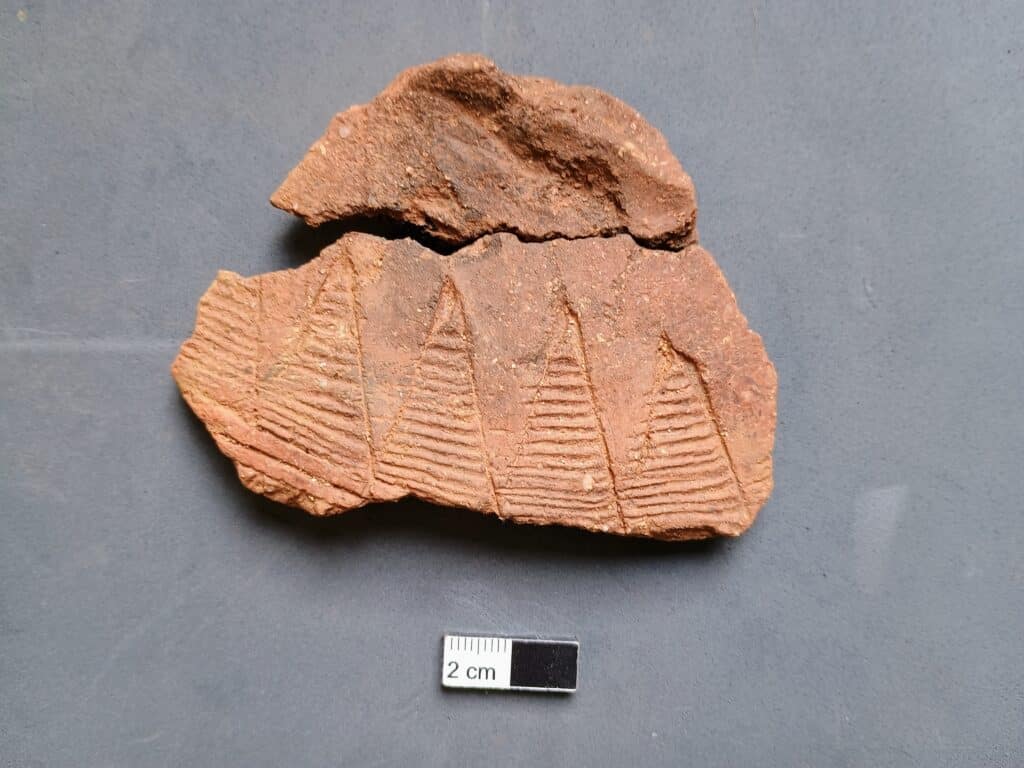Ceramic and lithic remains dating from the late Neolithic or early Bronze Age, about 5,000 years ago, have been found under the stratigraphy of the Roman period
The extension, agreed with the Department of Culture of the Catalan Government and the Municipal Archaeology Service of Mataró City Council, will allow us to have an approximation of the extension of the hypothetical prehistoric site
The extension will prolong this phase of work until the end of the year and will have an extraordinary budget of 354,000 euros
The archaeological work carried out at the Ca la Madrona site have revealed prehistoric remains located under the site from the Roman period. For this reason, Maresme Circular, the brand of the Maresme Waste Consortium, has decided to extend the current archaeological work so that archaeologists can finish the Roman stratigraphy and, later with a new tender, access the possible prehistoric site. The work is being carried out by the archaeological company Can Mansana SL in the area where the “industrial sector” of the future Mataró-Maresme Circular Park will be located.
The extension, which has the authorization of the Department of Culture of the Catalan Government and the approval of the Municipal Archaeology Service of Mataró City Council, will serve to extend the archaeological work from March until the end of the year. During this time, the excavation of the Roman site will be completed, the concrete structures of the former Mataró Glassworks Workers’ Cooperative will be removed and a first approximation of the extension of the hypothetical prehistoric site will be obtained, which will be key to plan a future phase of excavation specific to this stratum.

Aerial image of the archaeological work at the site of Ca la Madrona, in the area where the industrial sector of the future Mataró-Maresme Circular Park will be located. In the image you can see the foundations of the former Mataró Glassworks Workers’ Cooperative along with some of the tombs of the necropolis of the 3rd century AD found at the site / Maresme Circular
The extension will cost 354,000 euros. In total, Maresme Circular has invested in the site of Ca la Madrona about 5 million euros which have been allocated to archaeological work, earthworks and other expenses associated with the interventions.
A very profitable archaeological intervention
The remains located during this archaeological work can be framed in three different periods. The first is from the modern period with vineyard ditches (17th-18th century). The second is from the Roman period, also with vineyard ditches (1st-4th century AD) and a necropolis (3rd century AD) with 71 individuals, which gives continuity to the one found during the first phase of archaeological excavations. And finally, the prehistoric period found under the Roman stratigraphy with ceramic and lithic remains dating from the late Neolithic or early Bronze Age, about 5,000 years ago. For the moment, remains from this period have been found in three different areas of the plot, but as the work progresses it will be possible to know if they are isolated findings or from the same prehistoric site. In this way it will be possible to determine the dimensions, chronology and type of site (whether it is a habitat or a burial site).

Fragments of bell-shaped pottery from prehistoric times / Maresme Circular
Prehistoric sites usually contain stone objects or ceramic fragments, as well as biological remains (animal bones, seeds, charcoal, etc.). Negative features are also found, such as silos, hut bottoms or stick holes, but positive features are rarely preserved. However, the data obtained will be very important because it will provide information about a very little- known period in Mataró and the Maresme. Since these are usually very fragile materials, which can degrade quickly if left exposed to factors such as rain, sun or temperature changes, they are thoroughly documented, analysed if appropriate and preserved so that later museums or interpretation centres can exhibit them, without jeopardizing their conservation.
Work continues on the first phase of the Mataró-Maresme Circular Park
For its part, the company Vialser Edificación y Obra Civil, S.L.U. is continuing with the construction work on the first phase of the Mataró-Maresme Circular Park, which is expected to be completed in the spring of 2026. This first phase has a budget of almost 7 million euros and will allow the construction of the ‘Remake Area’, a “civic centre” for waste prevention with a set of free services for citizens, and with a clear vocation for social integration.
The Mataró-Maresme Circular Park is a pioneering project in Europe that aims to promote the repair and reuse of materials and products to reduce the production of waste and also incorporates both in the design and in the construction process, the highest standards of sustainability that the project itself promotes in terms of circular economy.
The current archaeological intervention began in April 2024, after the specialized archaeological work was completed in the area where the Refer Area of the future Mataró-Maresme Circular Park will be located. This first stage of archaeological work carried out between 2020 and 2024 revealed findings from Roman, late Roman and medieval times which the Department of Culture of the Generalitat has authorized to move to the Bon Recés area, 250 meters from the original site, so that the Mataró City Council can exhibit them in a future interpretation centre.




